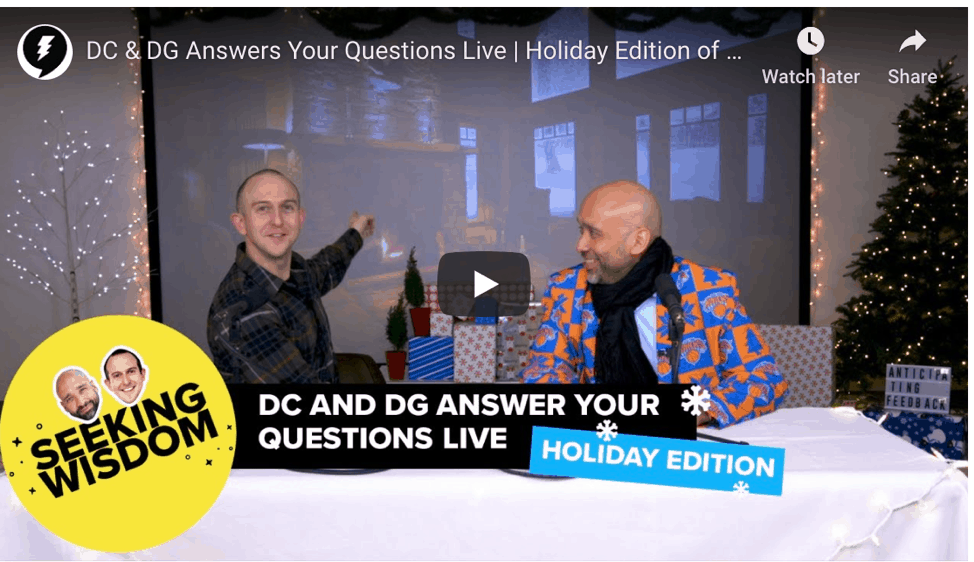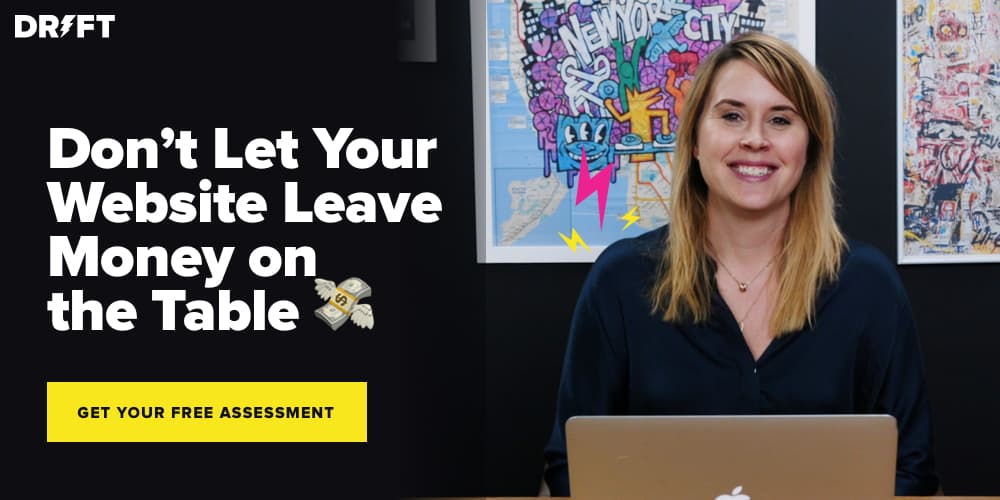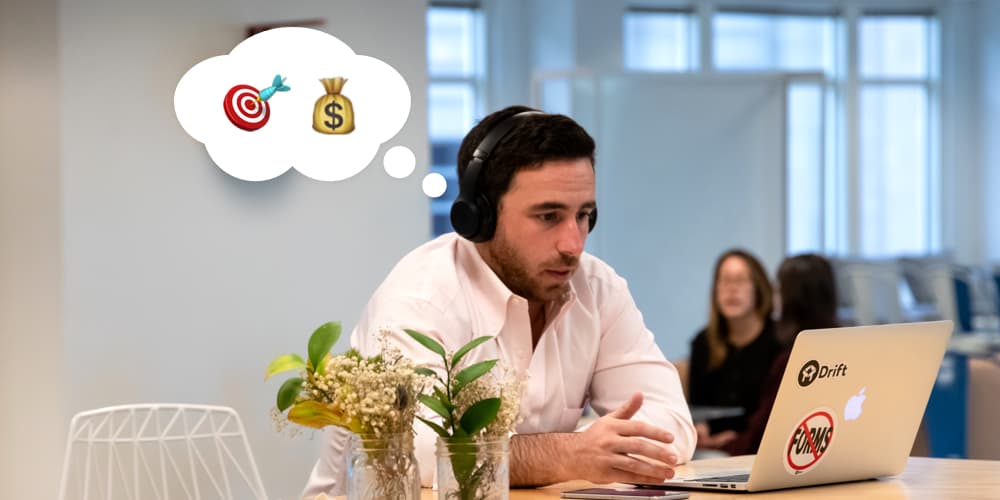As the world becomes more and more connected every day, companies are doubling down on their digital investments.
According to eMarketer, worldwide digital ad spend is expected to reach $517.51 billion by 2023. Today, digital accounts for more than 60% of all ad spend.
But investing in channels and technologies isn’t enough.
The pervasiveness of digital means that competition in almost any channel is fierce. Potential buyers are now inundated with brands competing for their attention. And customers are demanding more of their vendors to innovate and meet them on their terms. The urgency to create a unique experience on the digital world stage is at an all-time high.
In other words: It’s a crazy time to be a digital marketer.
Hey there, it’s Matilda 👋
And if you’re here, you’re probably in the same boat: Trying to find new and innovative ways to up your company’s digital marketing game.
To help you avoid the long hours of research and brainstorming I had to go through, I gathered a list of the best ideas I’ve come across to break through the noise online. Check them out 👇
#2 Online Communities & Social
#1: Virtual Events & Webinars
In a time when in-person conferences are at a stand-still, virtual event are a good go-to solution to help fill the pipeline gap. Your challenge as a digital marketer is to differentiate this experience from anything else out there.
To start, I need to get this off my chest: Virtual events are not webinars!
Now that we’ve got that straightened out, let’s talk about what a virtual event should be:
- An online conference of speakers, experts and attendees. Whether pre-recorded or live, virtual events aren’t your run-of-the-mill webinar presentation. They’re a collection of topics carefully woven together like any in-person conference agenda.
- They involve partners & vendors. Pooling your resources with other partners and vendors to increase your audience size is ideal for virtual events. Not just when it comes to lead-sharing, but for your attendees as well. The more diversity you can add to the agenda, the more learning opportunities and value there is for the people attending.
- They’re interactive. Every great virtual event should have an element of interaction to keep attendees engaged and moving. I mean, outside of binging Stranger Things on Netflix, there’s only so much time someone can spend staring at a screen.
- They encourage further networking. To add on to the interactive part here, the best virtual events should give attendees the ability to network with one another and hopefully speakers as well.
- They’re recorded. Similar to webinars, most attendees can access recordings of speakers after-the-fact. Some people may not be able to take time off for a virtual event like they do a conference. In light of that, be generous with sharing recordings.
So how do you throw a stand out virtual event when everyone wants your audience’s screen time? Here are some tips and tricks I’ve found that offer a winning combination:
Whether Casual or Professional, Keep it on Brand
Wistia ended their Wistiafest a while back because of the strain the event put on their resources. In 2018 (yeah, prior to what’s going on now!), they decided on a new approach to their conference: a virtual event.
It was a new concept, and they needed something creative to justify the move to their audience. They called it Wistia CouchCon.
They also did something else pretty dramatic: they made it free.
And, it worked!
They crowdsourced 13 amazing speakers from their social communities and pre-recorded most of the speakers, except for the keynote, which they did live.
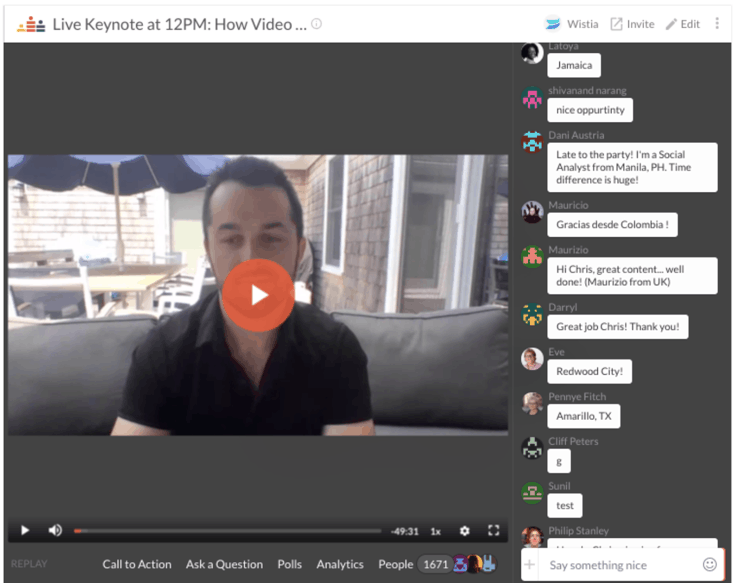
People loved it. They had high engagement throughout, dismissing the naysayers who thought no one would show up.
The term “couch con” might feel a bit unglamorous compared to some other conferences you’ve gone to, but it was very much on-brand for Wistia, which thrilled their key audience.
Be sure to keep the tone of your marketing the same for your online event. So if you’re more casual like Wistia, something like CouchCon might work. But that same branding wouldn’t work for a company like Gartner.
Get People Talking
In that last screenshot from Wistia’s live keynote, you see a stream of comments from people asking questions and interacting with other attendees. Like webinars, having this kind of feature adds an element of networking to an online event.
But there are other ways to encourage this kind of networking as well:
- Create and open Slack communities pre-, during and post-event. Slack communities have made me a better marketer. There are so many awesome ones out there too. Why not create ones around your event?
- Organize or encourage launch parties. Google I/O, which is an in-person conference for developers (though, like other recent events got moved online this year), did something pretty clever to get more engagement from those streaming their conference from around the world: they organized launch parties. This is a great way to add a level of networking to your event. Plus, you can ship these parties swag so they feel even more connected.
- Add games, trivia and Q&As to presentations. One way to keep people engaged during your event is to add elements that require some type of back and forth. There are some really cool programs out there like Kahoot where you create live trivia games to bolster audience participation.
Get People Moving
Wistia included a live keynote as part of their event.
But you could also get a bit more creative. Yoga classes, skill development, etc. There are a ton of cool and interesting ways to get people off the couch and moving during events like these. Think of these like coffee breaks you would have during your own in-person conferences.
Plus, you can bring on speakers and experts in areas that a lot of people otherwise wouldn’t see. Give people new hobbies to rave about!
What About Webinars?
Webinars are probably part of your lead generation strategy already. But they just got more important. We love webinars at Drift. They’re great for teaming up with partners and customers to share collective knowledge with the community. They’re also awesome lead-share opportunities.
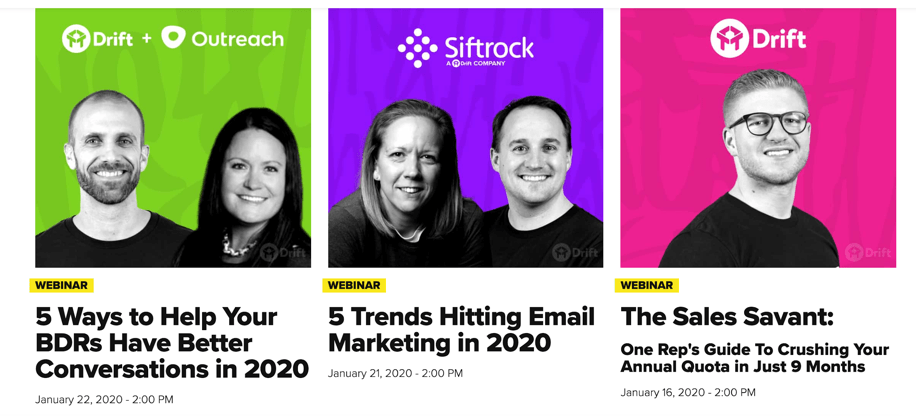
Here are a few tips to up your webinar game:
- Use webinars to promote larger virtual events. Webinars as a teaser? Why not? To get people excited for your upcoming virtual event, work with some speakers to introduce topics that they’ll be discussing before the big day.
- Turn podcasts into video-based webinars. We used to do this for a lot of our Seeking Wisdom podcasts and had DC get in front of the camera. It’s a great way to get multipurpose use out of your content.
- Turn breakout sessions into online courses or webinars. So you had an amazing line-up of speakers, but your event was postponed or canceled? Don’t throw good content away. Work with speakers to turn those breakout sessions into a webinar series or online course for your attendees and audience.
#2: Online Communities & Social
Online communities are thriving in the digital economy. Reddit – one of the most infamous online communities – is worth over $3 billion.
For marketers, the challenge becomes focusing on what online communities or channels are right for their brand.
But to be truly successful in these communities – and on social for that matter – you need to be authentic. Some of the most successful companies in the world – from Apple to Amazon – are winning in the B2C economy because they have mastered the art of authenticity.
To get real value out of online and social communities, digital marketers need to take this same approach. Don’t just use these channels to “spray and pray” that your content finds the right people. Use these channels to spark real conversations and learnings, and then use content and product as a means of finding solutions for those in the community.
“In the long run, taking the time to build an authentic foundation and a community of brand ambassadors will help establish and maintain this authenticity, even through turmoil.”
– Ashley Deibert, CMO, Videolicious, “Why Authenticity In Marketing Matters Now More Than Ever”
Here are a few ways to bring authenticity to your online community and social channels – while also identifying opportunities for pipeline creation:
Use Communities to Research Pain Points & Problem-solve
Use communities to understand what the market and your ideal customers (ICP) are looking for. At Drift, we sell to marketers and salespeople. Given I’m a marketer myself, this makes it easy for me to identify the types of communities my customers are in.
What types of questions are people asking in places like user groups? How about online Slack communities? To answer questions like these, I make sure I have an active presence in spaces including:
- Marketo community
- Slack groups like Marketing Ops Professionals or RevOps
- MarketingProfs
- Drift Community
Again, I’m not just using every interaction here to sell Drift. I’m building a rapport with members and helping to solve pain points. You’d be shocked how naturally the conversation develops into vendor discussions.
Build a Strong Brand Voice & Master Social Selling
Building a strong brand voice on social is the best way to create authenticity and unearth additional opportunities. Just ask Wendy’s.
The fast-food brand has redefined corporate social strategy by developing a personality that draws people in – not with constant product selling – but with wit and humor.
And this strategy seems to be paying off. Between 2017-2018, Wendy’s reportedly used social media to generate an additional $64 million in profits.
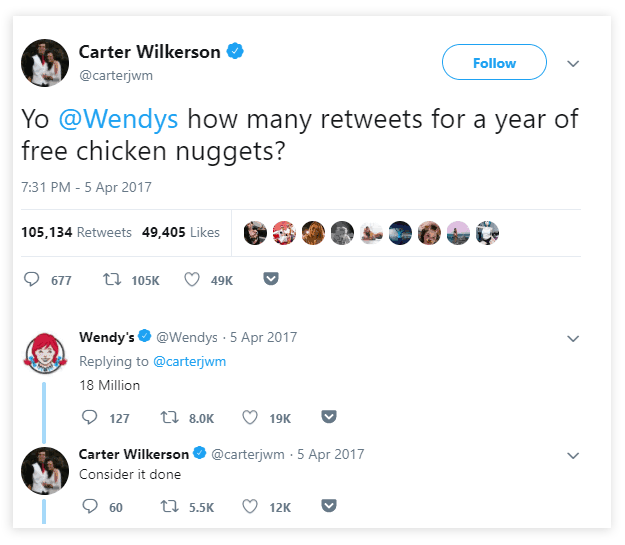
And before you say, “well that’s a B2C play,” think it through: A strong social presence makes it easier for people to find and research your product. And with 92% of B2B purchases started through an online search, the more presence and reach you have, the better.
Plus, it sets a better foundation for sales when social selling.
Today’s sales teams rely on LinkedIn’s 300 million+ users to generate opportunities and start conversations that might otherwise stall in someone’s email inbox. Social selling also allows sales to connect with key decision-makers faster. According to Forrester, “84% of senior executives use social to support purchase decisions.” Meaning if you want to reach executives, you need to go beyond email.
In that same report, B2B brands that embraced social selling outperformed their peers by generating 72% more opportunities.
At Drift, we’re big proponents of the “everyone is a marketer” mentality (we even added it to our marketing playbook). Because of this, we’ve had a ton of success launching campaigns across platforms and made it easier for our salespeople to start more conversations with the right people.
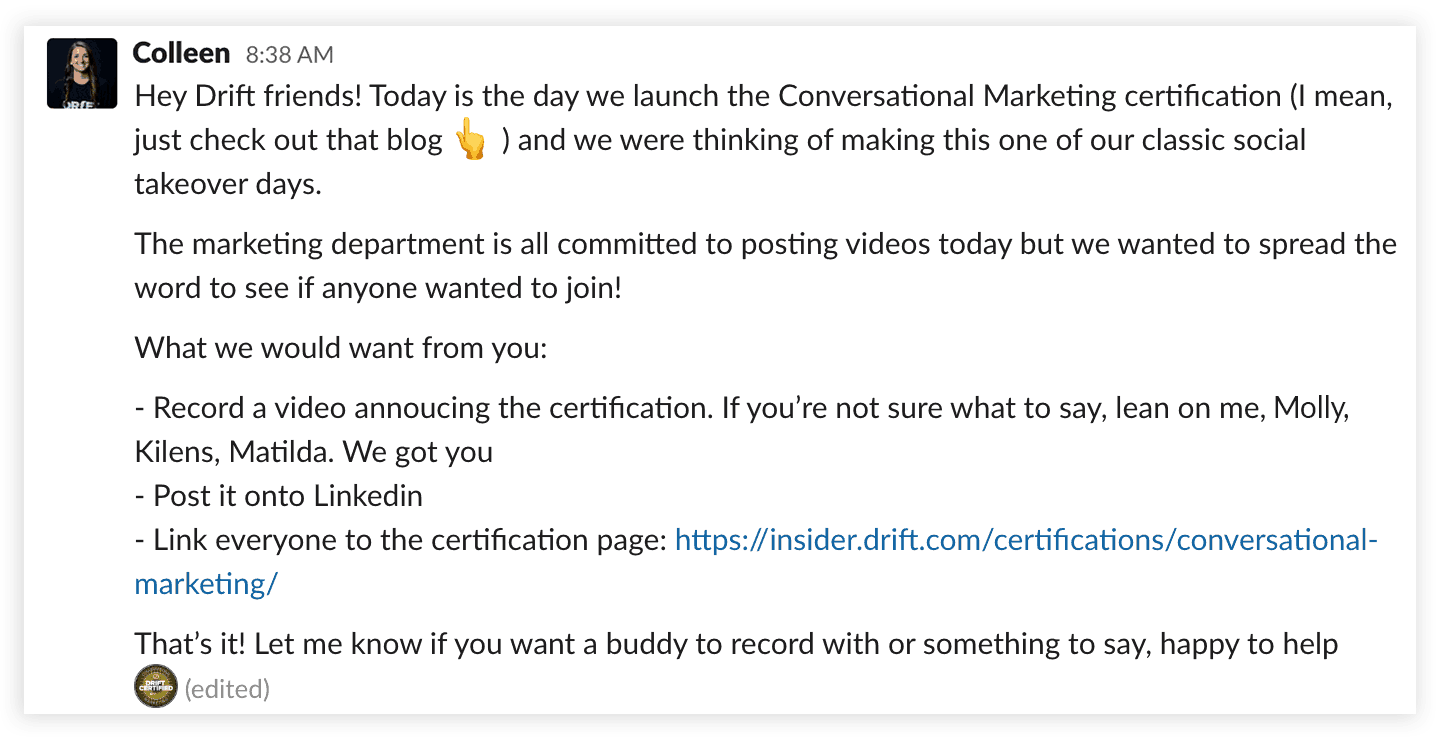
The takeaway here is: Just because you have the word “marketer” in your title doesn’t mean you have to go it alone. Build a case for why larger employee engagement can only help generate more pipeline for your team. And explore more channels!
Start Your Own Online Community
If you’re in any kind of technology or software industry, I can almost guarantee this conversation has happened or will happen:
Should we create our own community?
👆 The answer to this really depends on what your goals for the community are, and how much you’re willing to invest in that community.
By “invest” I don’t just mean 💰
I mean time and people too.
Managing a community is a full-time job. So if you’re not willing to dedicate resources to it, maybe start smaller with something like a Facebook or LinkedIn group.
But, if you’re ready to go in guns blazing, the benefits can be huge. There are a number of reasons to start a community:
- Group learning: Connecting users, potential customers and employees in one place is ideal for building a stronger network. It also provides a valuable resource for better understanding customer pain points, developing new product ideas and fixes and allowing your own users to sell your brand for you.
- Highly engaged opps: Community membership is a strong indicator of a highly engaged opportunity. Communities offer a direct channel between prospective customers and sales, and a space where people feel comfortable asking questions without fear of being constantly sold to.
- Easier onboarding, reduced churn: The tone set during the onboarding process is everything. Even something as little as sending a welcome email can impact long-term retention. According to PostFunnel, the company Magoosh tested this theory. They sent half of their new freemium users a welcome email, and none to the others. The result? 17% more users converted to paid within that group of welcome emails. Communities offer an easier barrier to entry for customers during onboarding. It not only allows for easy access to support, but also gives customers the ability to self-service their learning.
- Cross-sell & up-sell: The best communities provide both general knowledge content and product-related content. In other words, they don’t make it all about them. But having that product information in there can be really helpful for communicating new features and updates that get lost in a sea of other emails. This allows customers to do their own discovery and see the value of features communicated in real-time.
We recently launched our own community on Drift Insider. And that has started so many new opportunities and conversations that would be impossible to manage anywhere else.

The great thing too is that everyone on the marketing team is committed to spending time in the community to answer questions and start conversations. Seriously, we put a calendar behind it 👇
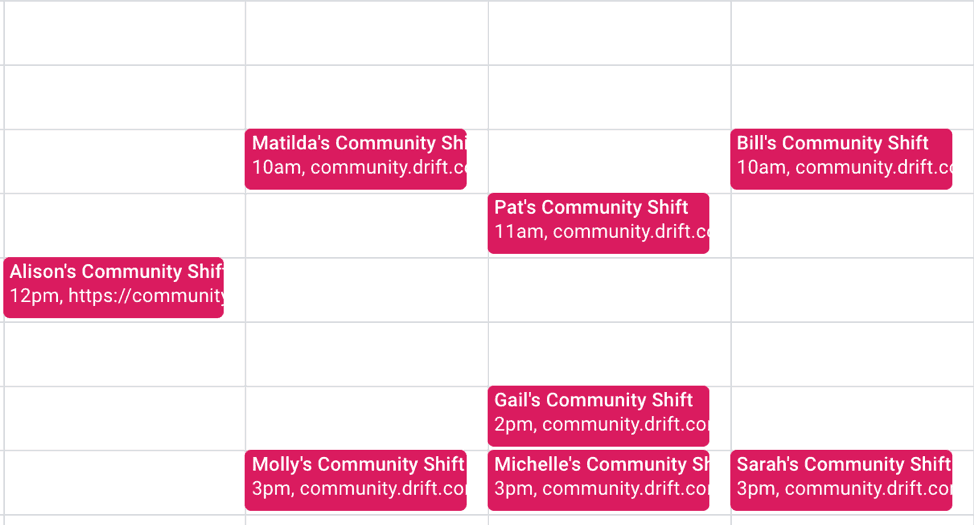
I say this not to brag, but to show that you really do need to have the time and resources to make a community thrive.
#3: White Glove Paid Digital
A lot of marketers are looking for ways to reinvest their conference budget. While it’s easy to simply pour a bulk of that money into paid ads and call it a day, may I suggest a more focused approach?
People are inundated with ads every day. Try focusing on creating more personalized experiences and building an ad strategy that brings experimentation to scale.
Start with personalization. To be clear, personalization isn’t just adding a name token somewhere and calling it a day.
Here are a few a quick steps on how to create a more personalized ad experience:
- Run an A/B or multivariate test on a few different ad offers.
- When you find the offer that your core audience prefers, make that the main offer.
- Personalize and experiment with landing page copy and messaging (Optimizely and Unbounce are great for this).
- Add intelligent chatbots that use intent data to drive conversations in real-time.
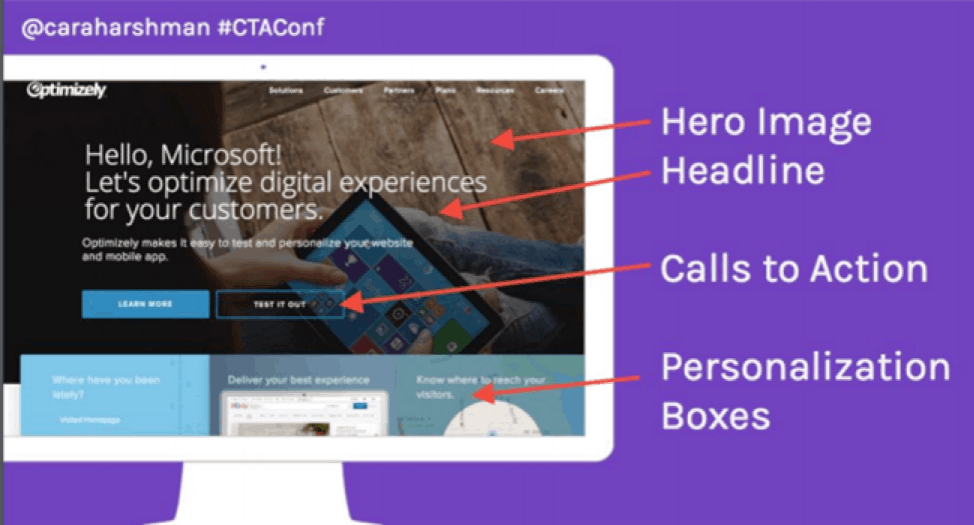
Source: Unbounce, How to Predictably Fill Your Funnel Using Account-Based Marketing
There are a ton of awesome plays you can do here when it comes to PPC, like retargeting, for example. You can check out more strategies in another post we have here.
#4: Video
You might already be using video to connect with your teams while you’re working from home (check out how we’re doing it here).
But if you’re not using video to connect to your partners, prospects, and post on social, you’re missing out on a huge opportunity to build relationships in that 1:1 way, without leaving your desk.
Here are some of my favorite video plays.
LinkedIn Direct Message
We’ve all had someone slide into our DMs on LinkedIn, but how many times have you really engaged with someone from a cold outreach message? That’s why I absolutely love our sales rep Haylee’s “blind pitch” approach 👇
Meeting Recaps
Whether you’re recapping an internal meeting or recapping one with a client, you should use video to create actionable next steps and allow people to chat in with questions right through your video.
Videos on Social
You may have seen me or other Drifters shoot impromptu videos on LinkedIn. (Shout out to Mark Kilens 🤗)
Generally, we love doing day-in-the-life Drifter videos around a new product launch or a new piece of content. It’s fast, easy and, as you can see, collaborative: 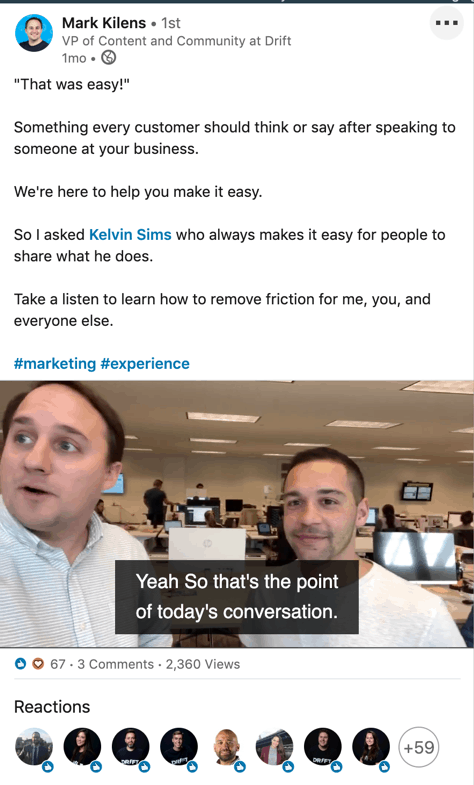
Video is changing the way we communicate online. If your reps aren’t using it now, they’re already behind.
#5: Conversational Marketing
So, you got people to your virtual event, your landing page, or webinar. What now?
Well, why not start a conversation?
People are on your website right now and they want information. They want to know how you’re different from your competitors. They want to know your pricing. And most of all, they just want to have a conversation.
Enter stage left conversational marketing.
Here are a few ways you can implement conversational marketing right now:
- Implement live chat on your website. If you’re not using chat today, you can always test drive Drift on your website now.
- Build out a custom Conversational Marketing Blueprint of your own.
- Develop a foolproof PPC strategy that uses chat and conversational marketing best practices to cater messaging based on UTM parameters.
- Use conversational marketing and chat to fix lead quality issues and better align with sales.
- Improve your email conversion rates for outreach with more intelligent email marketing.




